Modern technology to ensure the safety of advanced bases
The Kraken system of the American Army includes various sensors and actuators, all of which are integrated into a single comprehensive command system.
"An unsafe forward operations base cost the lives of two soldiers." That was one of the headlines. News the British army of January 29, 2013, in which it was a joint investigation into the death of two British soldiers killed on May 4, 2012 by enemy mortar fire at the Ouellette base in the northern province of Helmand. Base defense remains a key issue and recent military missions have contributed significantly to its development.
The advanced base protection systems, designed to reduce the effects of possible attacks and mainly based on passive systems, increasingly integrate active sensors and actuators, which apparently also include conventional passive protection. In addition, in order to reduce the number of personnel involved in the protection of bases, and to reduce the risk for soldiers on duty, remotely operated actuators are increasingly taking to the stage.
The US Army launched the first Kraken system, officially described as Combat Outpost Surveillance and Force Protection, at the beginning of 2013, based on Pashmul South. All components fit into an ISU90 container weighing less than a tonne, which is easily transported on the helicopter's suspension.
The Kraken system includes a control point that integrates all sensors used for conducting circular observation. Long-range observation is provided by the Ground Master X-band radar from the IAI Elta, at short distances the observation is conducted by the Flir STS-1400 operating in the Ka-band, since it can detect a person at a distance of 1 km and crawling at a distance of 200 meters. Various systems are used to localize the attacking fire sources, including the AN / PRS-9A intrusion detection system from L-3 Communications, consisting of seismic and magnetic sensors, and an acoustic localization system with five sensors.
Optical observation is provided by a set of optical-electronic sensors. Two digital stabilized TacFlir 380HD systems are installed on nine-meter masts, they include medium- and short-wave thermal imaging cameras with two fields of view, a high-resolution color camera and a laser range finder. Thus, this kit is capable of providing a target control point, although 9 thermal imaging cameras can be installed along the base perimeter.
For initial deployment, Precision Remotes supplied two Trap 250 remotely controlled combat modules (SDMs) armed with M7,62B 240-mm machine guns. However, at the Spiral 2 stage, the army switched to the more powerful Trab 360 DBMS, which provides a full 360 ° full coverage, large vertical guidance angles and higher speed. The power supply is provided by a 5 kW power generator with integrated power management, which allows other sources of energy, wind or sun, to be used, although a battery is available as a backup solution. The entire system is installed in less than 20 minutes by four soldiers and can be serviced by one operator, although the Kraken command post has two jobs, one for viewing video data and the other for the other sensors. The software is based on the CommandSpace Adaptive C2 architecture from Flir; the rights to it were bought by the Ministry of Defense, which they called there JFPASS (Joint Force Protection Advanced Security System - a modern unified security system).
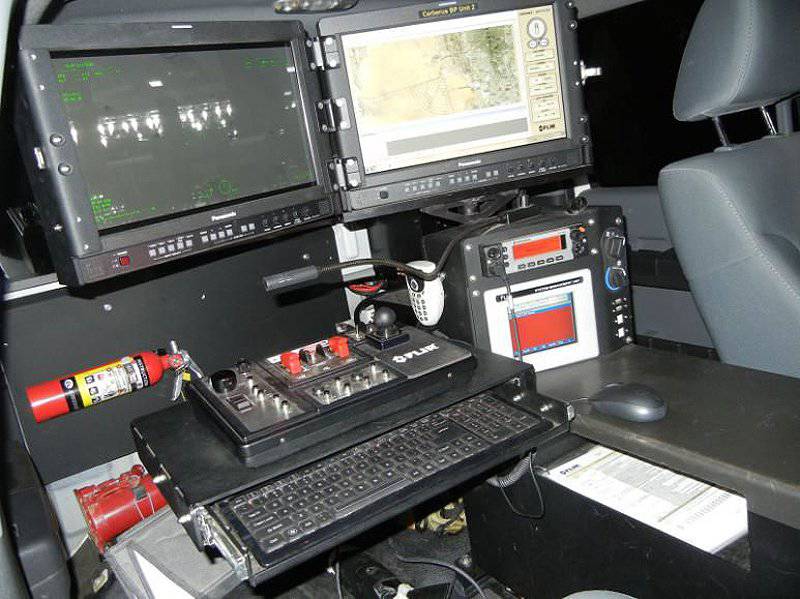
The integration of input signals from various sensors has become mandatory to ensure maximum protection of the forward base. Pictured Flir's solution for the Kraken US Army system
Another example: Italy
Another example of an integrated solution is the decision taken by the Italian army and deployed in Afghanistan at the start of 2013. Sistema Integrato di Force Protection (SIFP), an integrated defense system for its forces, was developed under a contract with Selex ES and is currently installed at the Bala Baluk advanced base in western Afghanistan, where it has optimally recommended itself against direct shelling. The heart of the system is the control module, in which the dispatcher and four operators monitor the situation around the base thanks to the data and images received from the sensor set of the system, which includes radars and optical-electronic means. All images and maps are tied to location coordinates thanks to Selex ES software, which allows you to prioritize threats. The main screen allows you to monitor the situation in real time, while each operator processes its particular piece of information, monitors the recorded data and deals with the maintenance of the system. In the second module, single sensor control systems and an additional operator serving them are placed.
Long-range surveillance of the SIFP system is provided by the Selex ES Lyra 10 radar operating in the X-band, it can detect a person at a distance of 10 km and a wheeled vehicle on 16 km. The main opto-electronic detection system is a stabilized Janus multi-touch system with a cooled thermal imager with two fields of view, a CCD camera with continuous optical and digital zoom and a laser rangefinder with a range of 20 km, which is more than enough for the detection range of the entire system almost 12 km. Up to 8 electronic units, each of which is connected to three acoustic sensors and one meteorological sensor, can be connected to the laptop of the command post. The SIFP system includes a PilarW shot detection sensor, developed by the French company Metravib; It can determine the source of direct fire with a caliber from 5,45 to 30 mm. This newest version is specifically designed to protect advanced bases, its control unit can be connected simultaneously to 20 sensors. The software allows you to prioritize threats, accuracy is ± 2 ° in azimuth, ± 5 ° in elevation and 10% in range.
In order to reduce the number of personnel and risks in SIFP, Oto Melara Hitrole Light towers were adopted as executive elements, of which eight were purchased. To improve the efficiency of SIFP, several additional systems should soon be deployed. Among them are two mobile Robot TRP-2, developed by Oto Melara and armed with a Beretta ARX-160 assault rifle and a 40mm single-shot grenade launcher; they will be used to patrol the perimeter of the bases along with an airship from the Israeli RT LTA Systems. The airship Skystar 300 has a diameter of 7,7 meters, a volume of 100 m3, a flight duration of 72 hours and a maximum payload of 35 kg. This small airship is already used by Canada in Afghanistan, while the US Army uses the smaller Skystar 180 airship, which is deployed from a vehicle, to protect the command post. In the fall of 2013, before the delivery of the system, Italian soldiers were trained in Italy. A SIFP system with typical components is installed in the command center in Rome for training, while a second SIFP system is installed in Herat to protect the RC-West HQ headquarters, which has a large number of Italian soldiers.
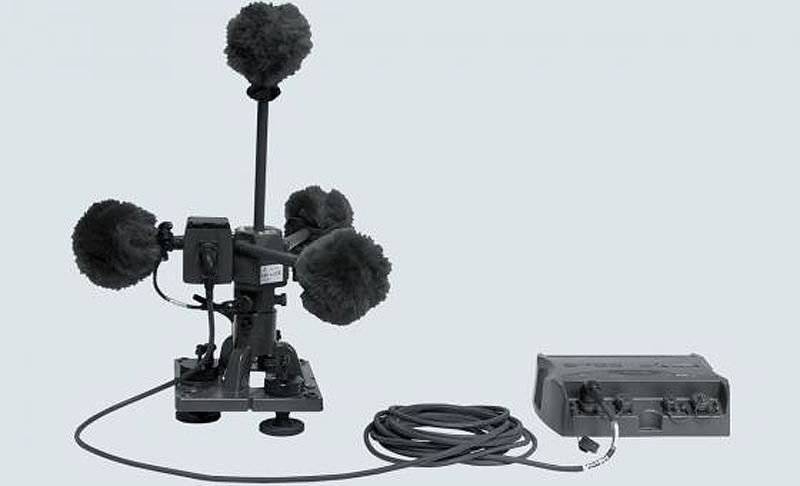
The latest version of Metravib Pilarhas is integrated into the Italian SIPF system and is currently operated in Afghanistan.
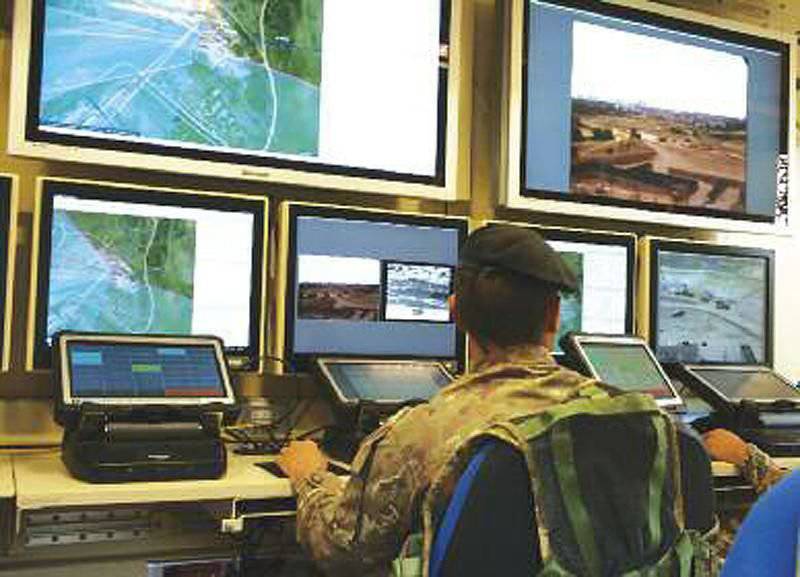
The control point of the SIPF system of the Italian army, developed by Selex ES, which includes radar, optical electronic and acoustic sensors. Currently, she is included with the protection complex of the forward base Bala Balouk
European Defense Agency
We mentioned only two programs on the integrated protection of advanced bases, but the list of programs in this area is not limited to them. Given the rapid growth of such initiatives in 2009, the European Defense Agency launched a program on the future interoperability of FICAPS camp protection systems (Future Interoperability of Camp Protection Systems), which aims to enable real-time information exchange between camp protection systems of different countries using unified equipment with automatically configuring, as well as enabling multinational operation of national systems through multilingual human-machine interfaces . The project is carried out and financed by Germany and France, and the contractors are the companies Rheinmetall Defense and Thales, who conducted demonstrations of the system in the field, including remote control of the camp protection system with another protection system, as well as remote control of sensors and actuators. In January, 2013, Germany and France agreed on general principles of interaction, which will lead to the development of promising systems with the involvement of other countries and the establishment of an international standard for the protection of their troops.
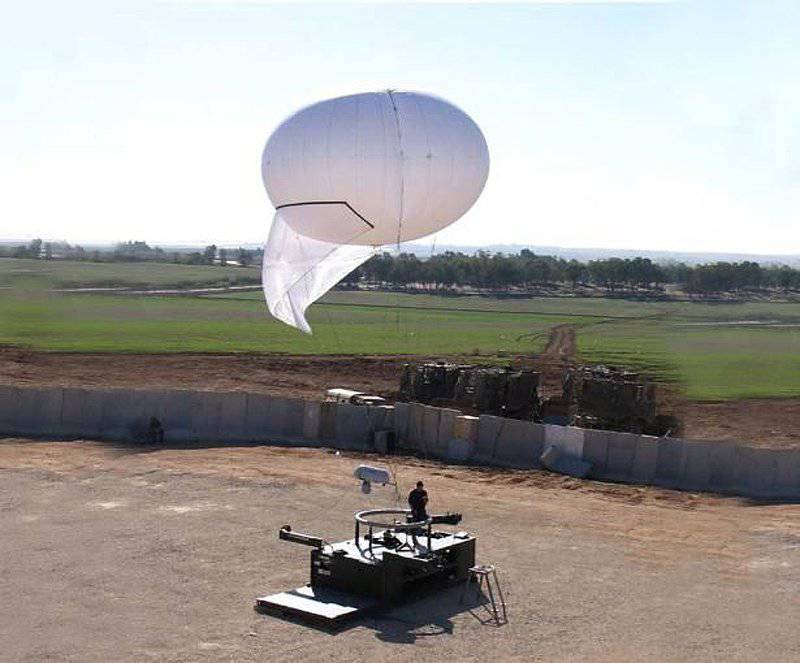
RT Skystar 300 airships (pictured) are in service with a number of countries, such as Canada, the United States and Italy in the near future.
Using its experience in the area of creating a DBMS, Rafael has developed a system for protecting the bases and borders of Sentry Tech.
Remotely controlled combat modules
As we see, remotely controlled combat modules (SDMs) are becoming a common tool for protecting advanced bases. You can give two more examples of the use of modules for different applications, these are modules from Kongsberg and Rafael. The Norwegian company offers its computerized weapon station CWS (Containerised Weapon Station). This is a holistic solution encased in a Tricon Type 1 container that includes a multi-fuel 110В / 15А generator with a backup battery and power management system, an electromechanical lift, and a Kongsberg Crows combat module. When operating, the top cover opens, a chain-mounted elevator lifts the Crows to the height of the 4,6 meter, providing an optimal field of view. For long-range shooting, the Javelin rocket can also be installed. CWS can be controlled by the operator from a distance of one kilometer and turn on other sensors, for example, a surveillance radar.
The Israeli company Rafael has developed a system Sentry Tech. It consists of several Samson Mini combat modules installed on fixed or mobile towers and integrated with detection sensors. Fire installations can be installed in line to protect the border, or around the perimeter to protect the base. A removable protective roof guarantees weather protection while maintaining maintenance and reloading. All systems are remotely controlled from the control point, the operator is able to ensure a positive target identification at the expense of the opto-electronic system before the target is hit.
It includes a daytime CCD camera with a field of view from 33,4 ° to 2,9 ° with a recognition range of 2,5 km and an uncooled thermal imager with a field of view 6,3 ° and a recognition range of one km. The Samson Mini can have an 7,62 or 12,7-mm machine gun, the module is equipped with a remote arming device and has a maximum angle of inclination 20 °. Sentry Tech is in service with several buyers, some have been using it for about five years.
The Turkish company Yuksel Savunma Sistemleri has developed a stationary combat module Nobetci (Watch), also known as RoboGuard. It is designed to replace soldiers on towers, this scheme reduces risks and frees some people from guard duty, increasing the percentage of personnel ready for combat operations, respectively. Since the system is stationary, the angles in azimuth are limited to 350 °, and the vertical angles are in the range from + 55 ° to -20 °. Roboguard is armed with two types weapons and both caliber 7,62 mm: one machine gun PKMS (machine gun Kalashnikov modernized easel), and the second machine gun AK-47. The set of sensors includes a day camera with a x12 magnification lens and a thermal imager; Images from these devices are processed and displayed simultaneously. The system is equipped with a motion detection and tracking function. Standard control is via cable, although a wireless solution is available as an option. The module weighs 85 kg without weapons and ammunition.
The Torrey Pines Logic family of Beam 100 laser pulse systems allows you to identify any type of optical system.
Laser Optics Identification Systems
Numerous CCD cameras, thermal imagers, imagers, radars, etc. are used to protect advanced bases. Another category of sensors used in this field is laser pulse systems, which make it possible to identify with considerable accuracy any optical device that is used to monitor from outside the base. One of the most active companies in this area is Californian Torrey Pines Logic, which began in 2008 with vehicle systems and fixed installations, but has now developed a number of portable binocular devices, promising to further reduce their mass, size, power consumption and cost.
The Beam 100 family includes three systems: Beam 100, 110 and 120 with a mass of 8,4 kg, 12,2 kg and 14 kg respectively. They are based on the principle of reflection in the opposite direction (retroreflections), according to which the system can perfectly determine the reflection of its own short and eye-safe laser pulses, due to the presence of an optical device inside its scanning sector.
All three systems guarantee continuous scanning in azimuth 360 ° and elevation angle -30 ° / + 90 ° and provide the GPS coordinates of all targets within 1000 meters, which can then be displayed on a digital map. As a rule, human-machine interfaces (HMI) are implemented using laptops and android operating systems and are stored in the system itself. Beam 110 and 120 provide a full video coverage that is not available for the Beam 100 model. Systems are usually installed on a tripod, optional sensors such as thermal imagers can be added to them, while the LAN and WAN network interfaces allow these devices to be integrated into operational management systems.
A similar system is proposed by the French company Cilas. Its SLD 500 laser detector is also mounted on a tripod and has a maximum range of 2000 meters. It can be divided into five main subsystems: an optical-electronic sensor, a panoramic head, basic control equipment, a power supply unit and a battery unit. The sensor head and its actuator, providing azimuths of ± 180 ° angles and –30 ° / + 45 ° vertically, have a total weight of 29 kg, and the entire system weighs a 120 kg with a tripod and power supply.
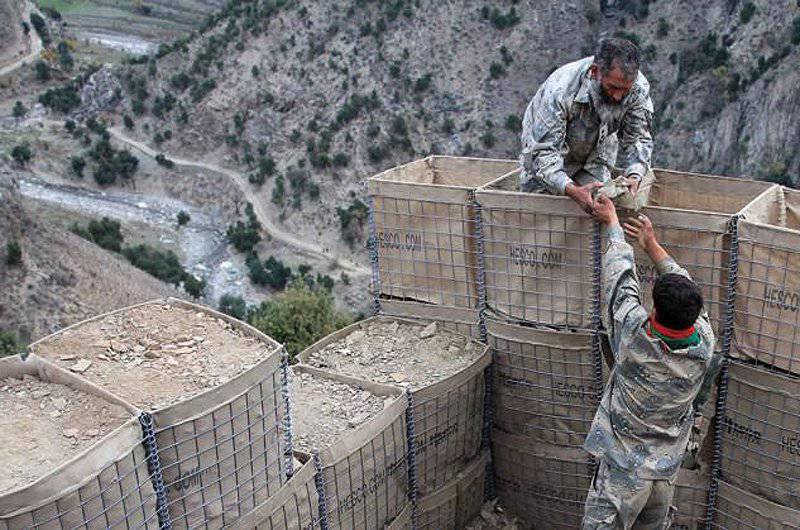
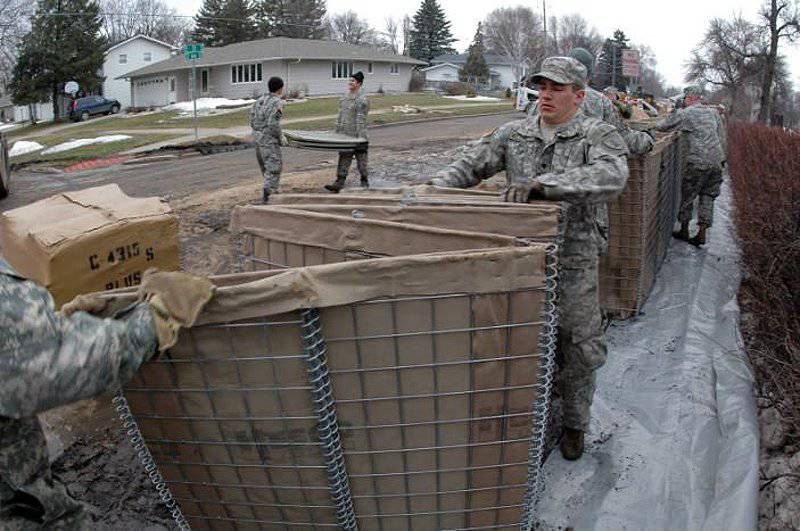
The phrase Hesco Bastion has become a household name in the field of passive protection of bases. The company is constantly improving its products, especially in order to improve their deployment.
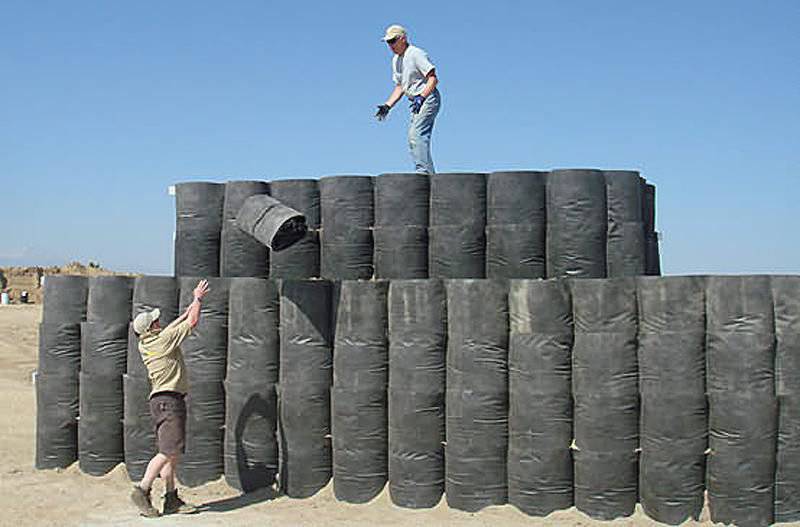
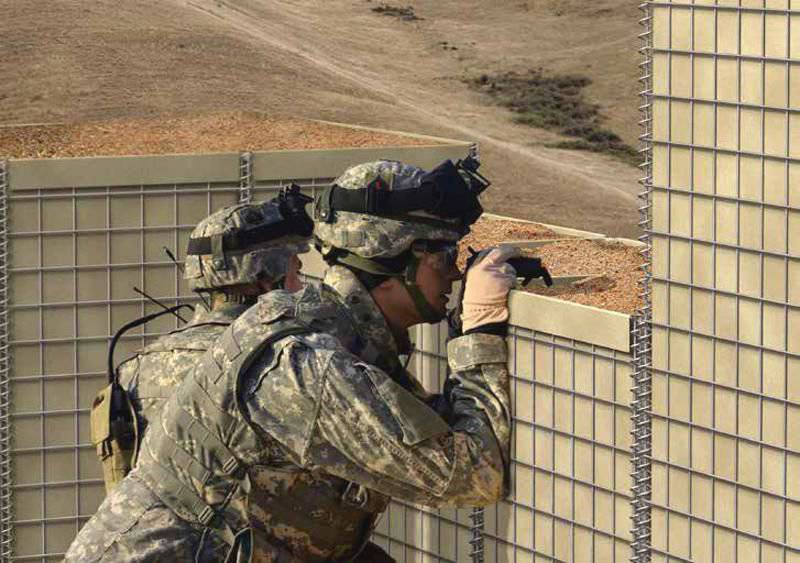
For several years Defencell has manufactured systems only from geotextiles, they are significantly lighter than other systems. Currently, the company has developed a gabion type system (a box filled with stone or pebbles from a galvanized metal grid on a frame, designed to protect the river bed from erosion, to set up regulatory and shore protection structures), known as Mac
Passive protection
Passive protection remains a key element of database protection. Numerous companies produce gabions, with which it is easy to build a defensive perimeter, as well as protective shelters in the case of a mortar or rocket attack. In the latter case, the simplest method is to use the existing structure, for example a container, and protect it from the sides and from above with gabions filled with soil.
At DSEI 2013, for the first time, Defencell presented its Mac products - a full range of metal welded gabions, lined with the well-known geotextile of the same company. Previously, Defencell was known for its lightweight solutions made from geotextiles only. However, the company later appreciated a niche for textile solutions, as well as a niche for gabions, and in this regard, it has teamed up with the Italian company Maccaferri to develop a new product featuring an improved fabric material with high resistance to UV light, which also has high strength characteristics. The Mac is available in 10 in various sizes: from the MAS 2 with the smallest sizes (61 x 61 x 122 cm) to the largest MAC 7 (221 x 213 x 277,4 cm). Defencell is looking for a launch customer for its new product.
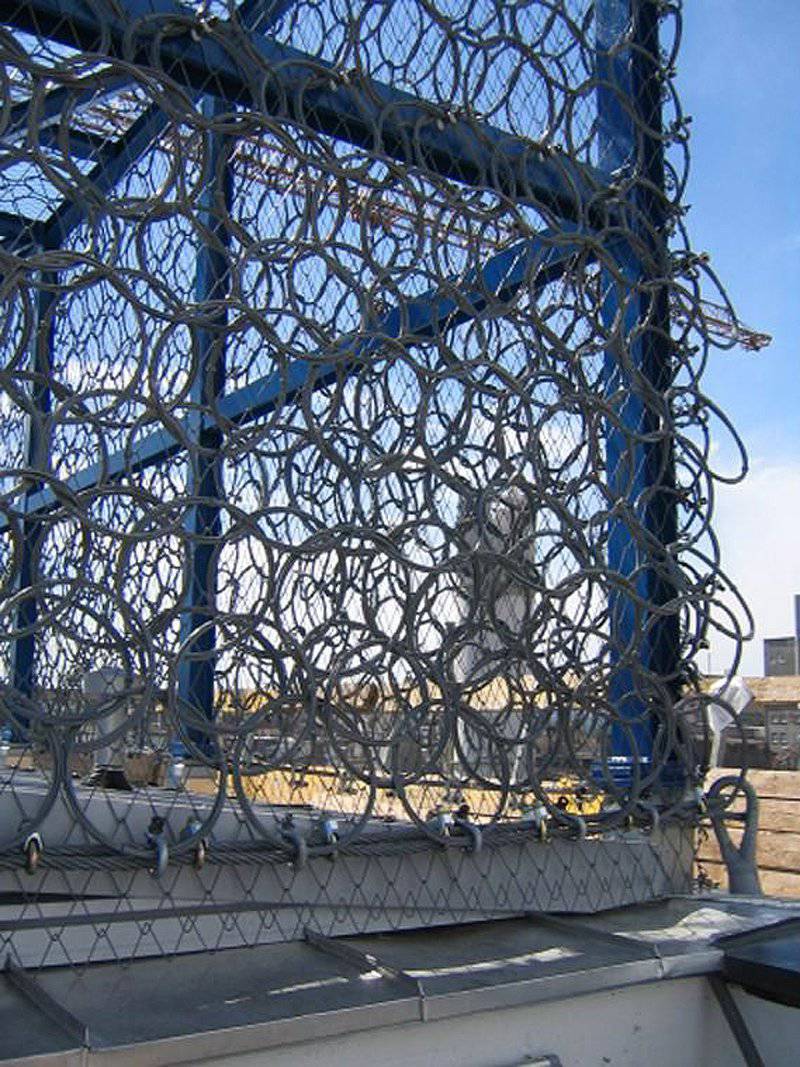
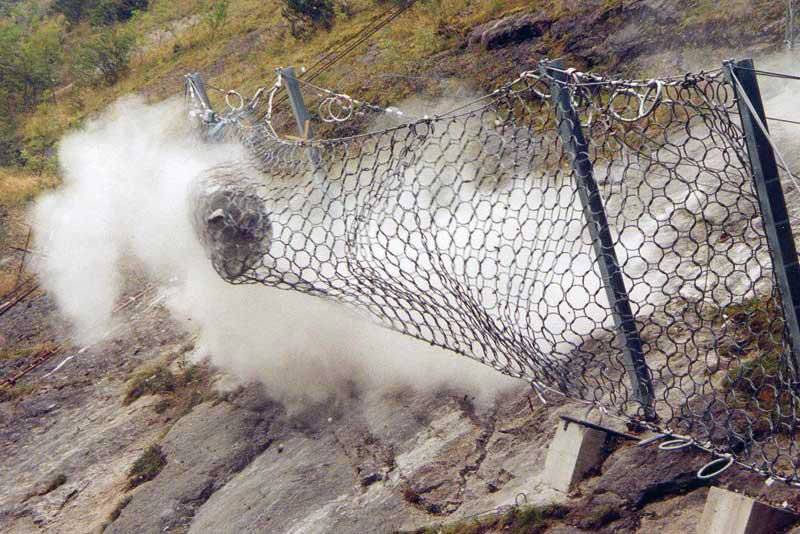
The TNO Dutch research laboratory has developed a grid that can stop an RPG. It can be used not only to protect vehicles, but also the territories of bases and control points.
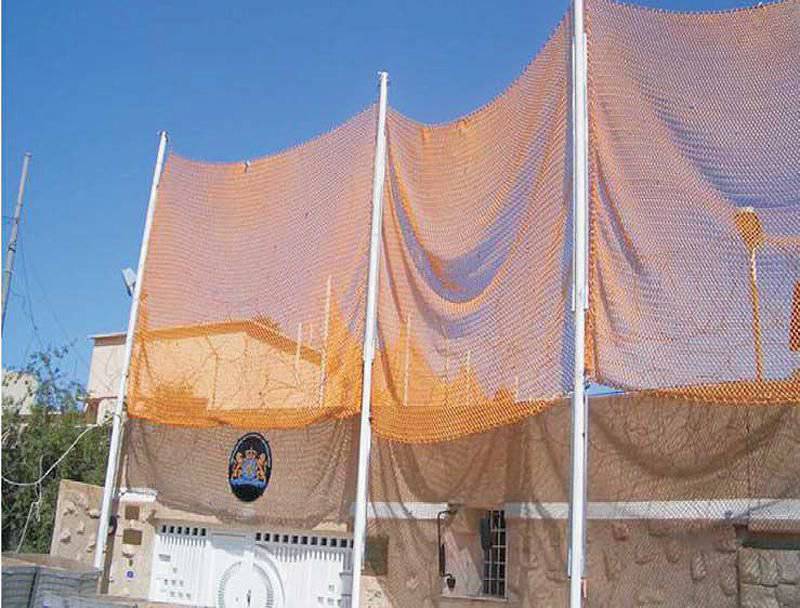
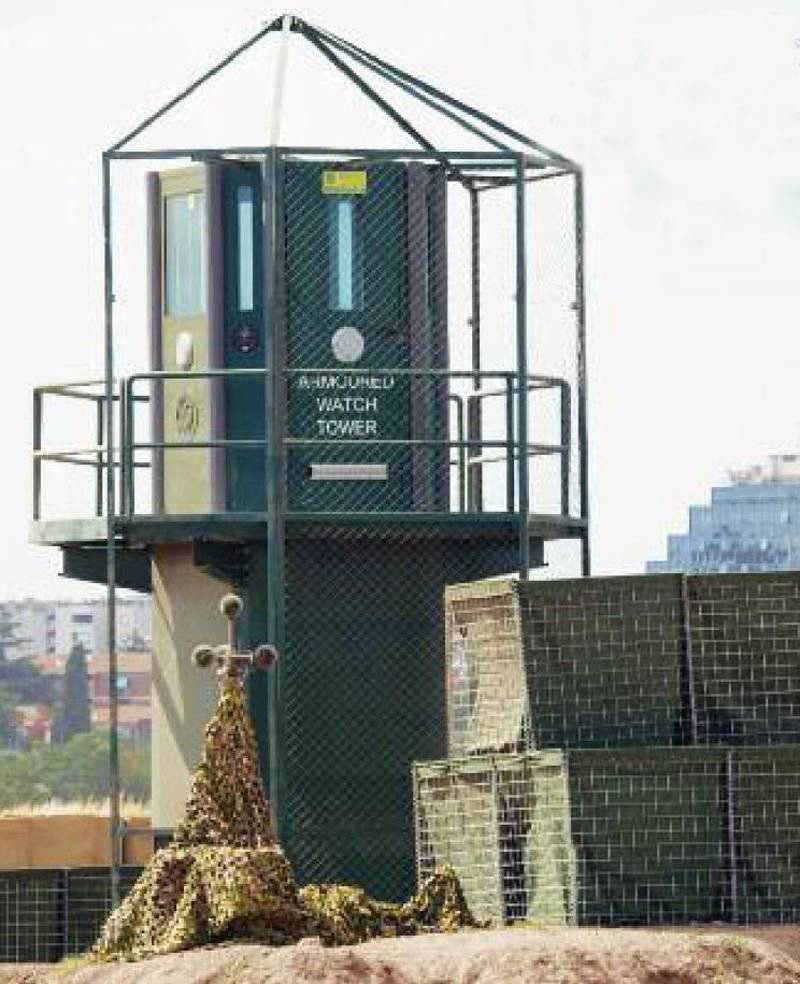
The armored guard tower (below) is protected from bullets, but to protect against RPGs, nets may be installed that were originally intended for vehicles, for example, the grid created by Ruag and Geobrugg (above)
Hesco, whose Bastion product has become a kind of gabion trademark, introduced a new design in 2012 that features a pin in the corner rings, which allows you to open a separate cell and restore (fill) the gabion. To reduce deployment time, Hesco has developed two systems, each of which is fitted to the dimensions of the gabion. For smaller gabions up to a meter high, the system is named Cart. It consists of a metal slide that pulls behind the 4x4 machine, from which pre-connected blocks are distributed with a height of 1 meter, a width of 1,08 meter and a length of 88 meters. Gabions, ready to be filled, are placed in a vertical position. This system was released in 2013 year, it added the operational flexibility to the Hesco family, in which it joined the Raid system (Rapid In-Theater Deployment). The Raid rapid deployment system with two-meter gabions has been in production for six years. In this case, the gabions are pulled out of the ISO container by a truck using a tug. The sizes are Raid 7, Raid 10 and Raid 12, 2,21 meter or 2,14 meter, 1,06 to 2,13 meter and 224 to 333 meters, although when two locking pins are removed, the blocks are five elements apart.
Since the beginning of 2012, a so-called HRSF (Highly Redeployable Security Fence) security relocated security fence has emerged on the market, designed to provide perimeter protection even without filling with a ballast material. The front side is made of an anti-overlapping grid, while stability is provided by bulk bags that are filled with available materials and which are inserted from the back side, where the grid is much lower. HRSF is available in three sizes, with the same width and length, respectively 1,3 meter and 3,9 meter and 2,4 height, 3,1 and 3,6 meter; the reverse side is much lower, which makes it easy to insert bulk bags. With a one-ton mass, the HRSF hedge can stop a 7,5 ton machine that is moving at almost 50 km / h.
Passive security systems are not only designed to protect against ground threats. In order to reduce the risks of RPGs released on ballistic trajectories, or from other types of attacking threats that can be launched at relatively small angles, the Dutch TNO laboratory proposed using networks originally designed to protect vehicles from RPGs. The network is installed on high vertical poles and protects the infrastructure, while providing good visibility outside the base. The network is made of high-strength fibers, has a low cost and low weight. Mesh systems are also offered to protect guard towers. The company Geobrugg showed a similar solution that increases the level of protection of the towers. Other metal nets used on vehicles are also suitable for this application. Sometimes the presence of people on the towers is vital because they conduct direct observation of the surrounding area.
Materials used:
www.monch.com
www.selex-es.com
www.rafael.co.il
www.tplogic.com
www.defencell.com
www.geobrugg.com
www.hesco.com
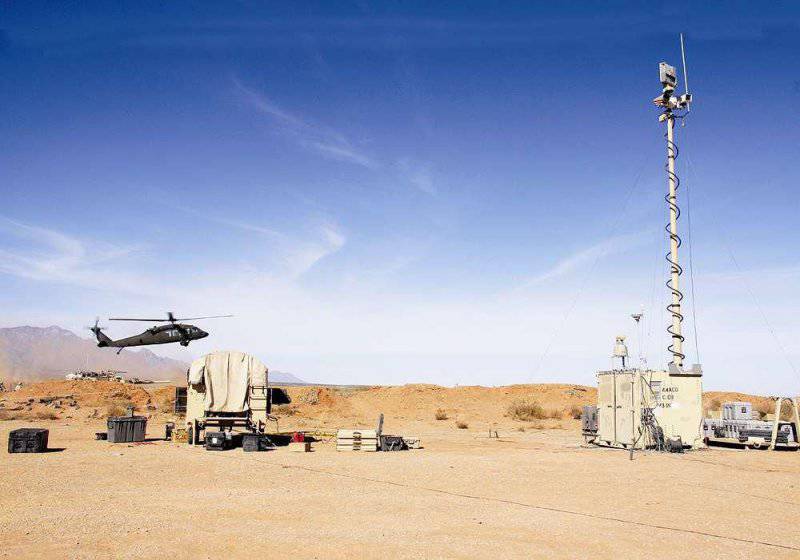
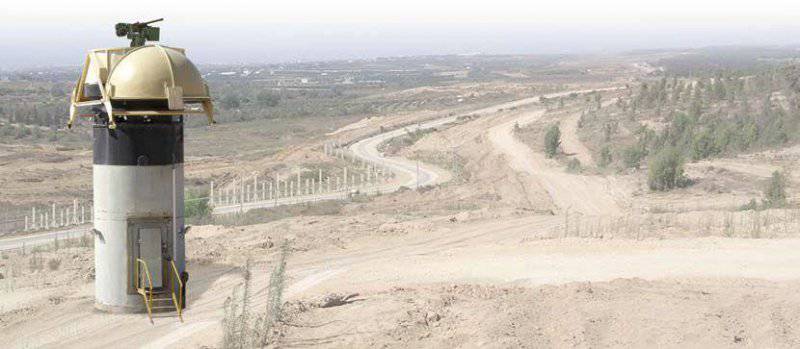
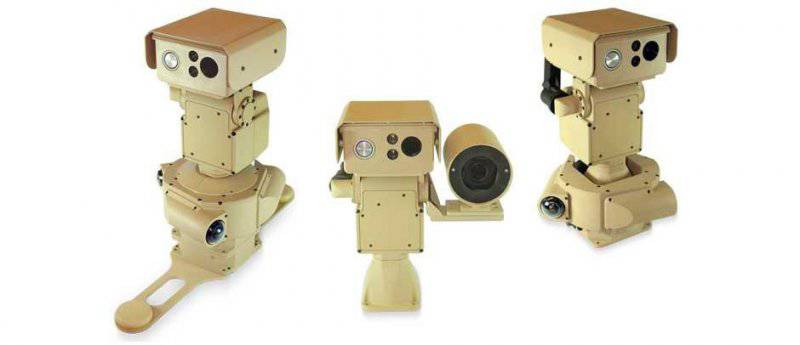
Information